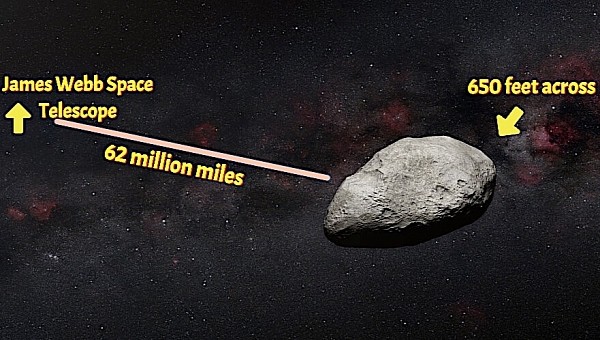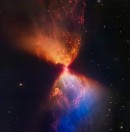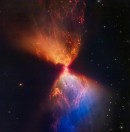There is no doubt in people's minds that the James Webb Space Telescope is one of the most (if not the most) ambitious and complicated space exploration projects ever undertaken by our species. Just remember how it all played out: it took us almost three decades to put the damn thing together, and we spent around $10 billion doing it. All of this gave rise to a lot of hope and expectations, especially for the scientific community, when it finally launched at the end of 2021. And by the looks of it, all that time and effort spent on making it seem to have been worth it.
Time and again since it started operating in early 2022 the Webb telescope surprised us all with the clarity of the images sent back, and with the sheer amount of data it can generate about outer space and its mysteries.
Scientists working with Webb-collected info are probably way behind schedule by now, and tough times lie ahead as they try to keep up with the machine. What that means for the rest of us space enthusiasts is to expect a continuous flow of new and intriguing details about our solar system and the deeper space.
This week started with Webb-related news coming from Europe. Like elsewhere, teams of scientists there are looking at Webb data too, dating as far back as the days when the telescope was still calibrating its instruments (meaning it wasn’t looking for anything in particular), more specifically the Mid-InfraRed Instrument (MIRI). And in that data, they found the smallest object detected so far by James Webb.
We’re talking about a piece of rock between 100 and 200 meters (328 to 656 feet) across, one of the estimated 1.1 million of its kind, leftovers from the early days of our solar system. The thing floats in the main asteroid belt, between Mars and Jupiter, and this is how it becomes obvious just how capable the space telescope really is.
You see, the Webb is not based near our planet, but at a distance of 930,000 miles (1.5 million km) away from it, anchored in one of our solar system’s five Lagrange points. That place is some 100 million km (62 million miles) away from where the tiny asteroid, which is about the size of Rome’s Colosseum, is located! And that really gives us a sense of how far the telescope can see the tiniest of objects.
Not many things are yet known about this particular asteroid, aside from the fact it has a very low-inclination orbit and resided in the inner regions of the asteroid belt when it was detected.
Its discovery however makes scientists hopeful further study of MIRI data will lead to the discovery of many more such objects, and that in turn can lead humanity to a better understanding of how our solar system began.
Scientists working with Webb-collected info are probably way behind schedule by now, and tough times lie ahead as they try to keep up with the machine. What that means for the rest of us space enthusiasts is to expect a continuous flow of new and intriguing details about our solar system and the deeper space.
This week started with Webb-related news coming from Europe. Like elsewhere, teams of scientists there are looking at Webb data too, dating as far back as the days when the telescope was still calibrating its instruments (meaning it wasn’t looking for anything in particular), more specifically the Mid-InfraRed Instrument (MIRI). And in that data, they found the smallest object detected so far by James Webb.
We’re talking about a piece of rock between 100 and 200 meters (328 to 656 feet) across, one of the estimated 1.1 million of its kind, leftovers from the early days of our solar system. The thing floats in the main asteroid belt, between Mars and Jupiter, and this is how it becomes obvious just how capable the space telescope really is.
You see, the Webb is not based near our planet, but at a distance of 930,000 miles (1.5 million km) away from it, anchored in one of our solar system’s five Lagrange points. That place is some 100 million km (62 million miles) away from where the tiny asteroid, which is about the size of Rome’s Colosseum, is located! And that really gives us a sense of how far the telescope can see the tiniest of objects.
Not many things are yet known about this particular asteroid, aside from the fact it has a very low-inclination orbit and resided in the inner regions of the asteroid belt when it was detected.
Its discovery however makes scientists hopeful further study of MIRI data will lead to the discovery of many more such objects, and that in turn can lead humanity to a better understanding of how our solar system began.















